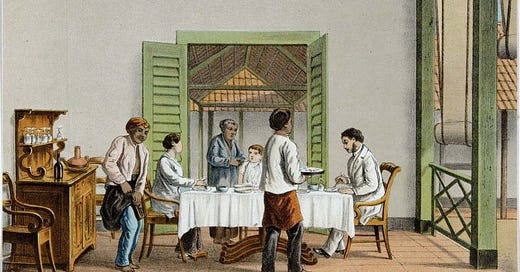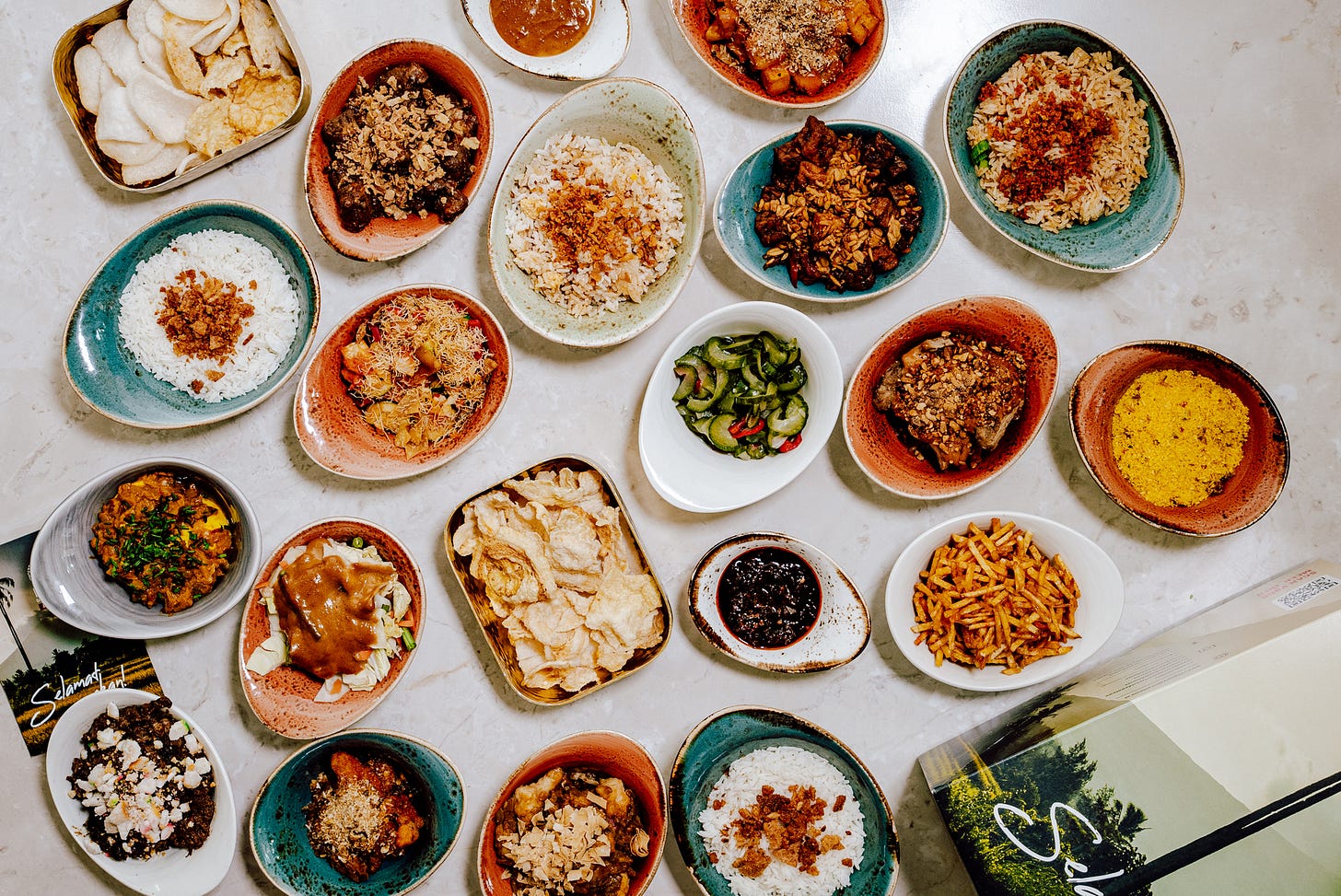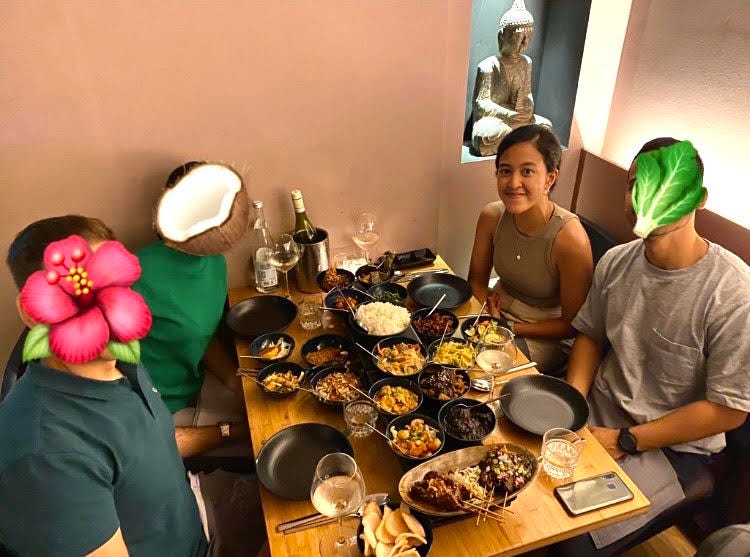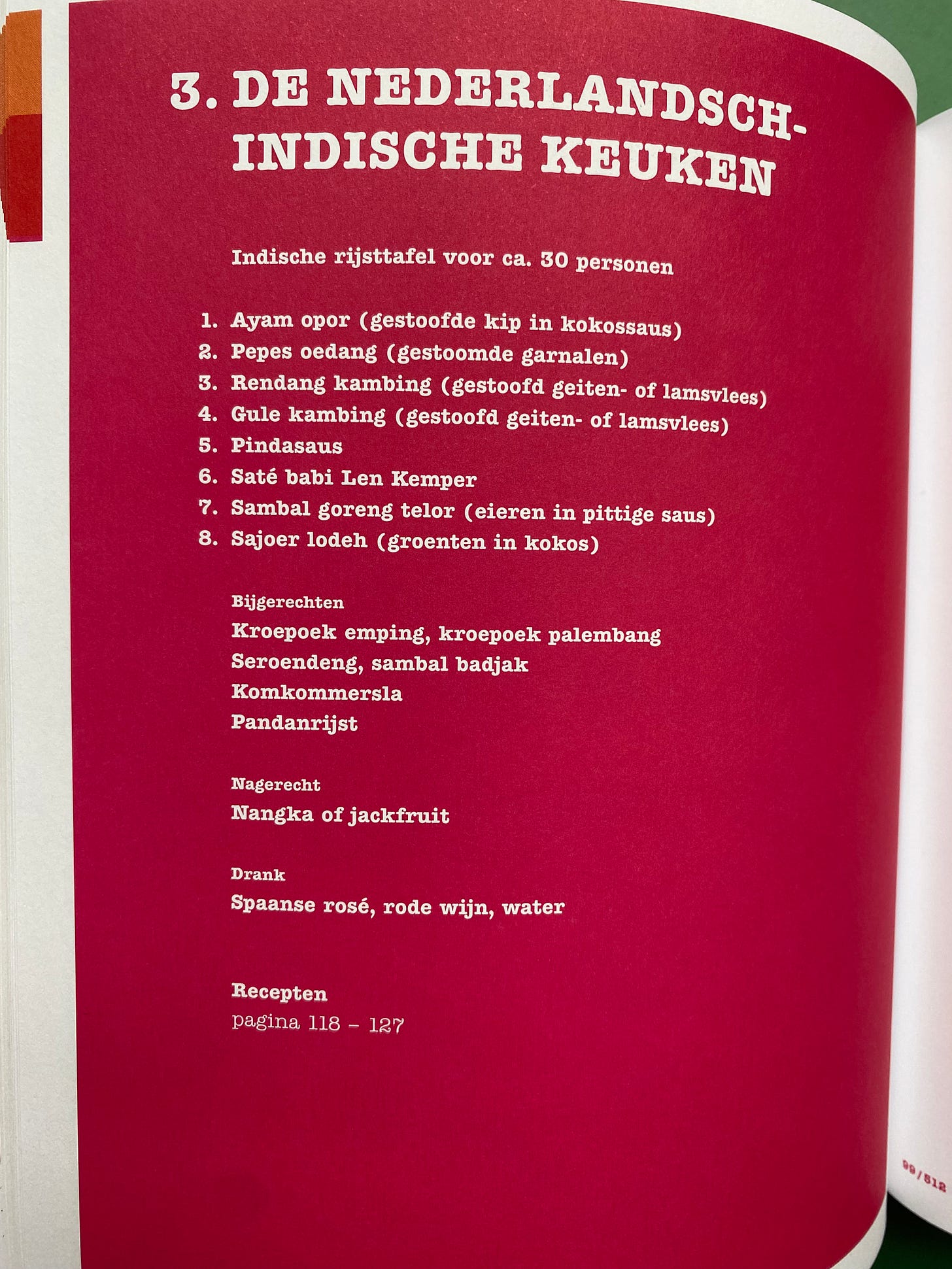Today’s topic is something that I have been thinking about and reflecting on for a while. And since today marks the 78th year of Indonesia’s independence from the Dutch, I thought I would share some food for thought, or shall I say, thought for food :-).
On rijsttafel.
When I moved to the Netherlands almost 10 years ago, I was thrilled to learn that there are plenty of Indonesian restaurants and tokos throughout the country. As I was living in Maastricht, a student town in the Southern part of the country, there were not as many Indonesian restaurants available compared to bigger cities in the Randastad area. While I and my Indonesian friends go to the Hague to get our favorite Indonesian food fix (I’m talking about Warung Padang Lapek’s flavor bomb nasi padang or Trio’s comforting bowl of mie ayam), a lot of my international friends know Indonesian food as rijsttafel. Honestly speaking, when I moved here for the first time, I had no clue what rijsttafel was. I never knew that we had a national dish called rijsttafel (and such a mouthful name), but soon enough, I learned that rijsttafel is basically a nearly unending parade of small plates all filled with different Indonesian cuisine. From rice, vegetables, meat, seafood, sambal, and krupuk, you simply help yourself to the 15+ selections as you wish. Usually, gado-gado, tempe orek, rendang, and semur ayam are a staple. I thought this was similar to going to a Padangnese restaurant where they serve you these selections and you pay for what you take, but how could I not hear about rijsttafel before?
So, is it Indonesian?
My judgmental 18-year-old self thought this was some kind of “whitewashed” Indonesian food abroad and must be bland and not spicy and all toned down. After reading about rijsttafel here and there, it turns out to be a Dutch invention during the colonial era. In the 1600s, the Dutch East India Company (VOC) began colonizing parts of Indonesia. After the abolition of the VOC in 1796, the Dutch government gained control over Indonesia, which was then referred to as the Dutch East Indies. During this era, Dutch plantation owners in Indonesia invented the meal, or shall I say, concept, as a way to showcase a wide range of Indonesian dishes all at once. It was also meant for Dutch colonizers to show off to their visitors the abundance of their colony. When thinking about this, I imagine a Dutch family sitting at a dining table on the veranda, maybe wearing the traditional Indonesian kebaya or batik, while being served rijsttafel by their Indonesian servants.
Between 1945 and 1968, the Indonesian government forced Dutch colonists to repatriate back to the Netherlands. It was also during this period that rijsttafel was most likely brought and introduced in the lowland. Today, rijsttafel remains popular in the Netherlands and even has been one of the main tourist experiences when visiting Amsterdam. Much like how fortune cookie does not exist in China, rijsttafel is much less popular in Indonesia (hence, my lack of awareness about the dish).
But, does it make the dish less authentic? This is a question that I often ask myself when bringing my international friends to eat rijsttafel (or any other Indonesian food). But again, what even is authentic? Who decides what is authentic? My cooking is different from my mom’s. My cooking is different from the recipes I tried to follow in my Indonesian cookbook due to the lack of available ingredients and whatnot. Food, recipes, and traditions evolve and it is reflected in rijsttafel. Rijsttafel might be Dutchified, it might be less spicy, it might be sweet-from-the-kecap-manis dominant, and it might be overpriced sometimes, but does it mean that it is less than my favorite nasi padang at Warung Padang Lapek? Not necessarily. Rijsttafel has evolved as a way of connecting two different cultures and remains a historical lens to the complicated past. It might not be my number one preference when going to Indonesian restaurants simply because I didn’t grow up with it. But fellow Dutch-Indos might have sentimental values to the dish as they grew up with rijsttafel and it’s what reminds them of their grandma’s cooking, hence, it’s authentic for them. So despite the history, rijsttafel will stay here with us and I will gladly tell the story to my friends when we order rijsttafel, but maybe with an extra dollop of sambal with it ;-).
-AP.








